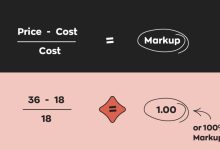COD (Cash on Delivery) – A Growing Business Model in Cross-Border E-Commerce
COD, or Cash on Delivery, as the name suggests, is a payment method where customers pay for their order upon receiving the goods. In recent years, many cross-border e-commerce sellers have implemented COD services on their standalone stores to boost order conversion rates. This approach significantly improves store credibility and enhances the shopping experience.
Replica product sellers running standalone stores have also embraced this model. Many of our clients operate in the Middle East, Southeast Asia, Japan, and other markets, offering COD as part of their checkout options. In fact, our company has integrated COD into our standalone store payment solutions to meet this demand.

COD merchants generally rely on two main approaches:
-
Single-page e-commerce – focusing on one or a few products with dedicated landing pages.
-
Full standalone store – offering a broader range of products in a mall-style structure.
Each model has its own advantages, and both can be effective depending on the niche.
The COD trend first became popular in Southeast Asia and Taiwan — in countries and regions such as Vietnam, Malaysia, Thailand, and Taiwan. Several years ago, e-commerce companies began promoting COD through Facebook, Instagram, and other social media channels, tapping into a market of over 4 billion active users. One well-known example within China’s cross-border e-commerce community is Bugu Bird Cross-Border, which reportedly achieved over USD 3 billion in annual revenue at its peak, proving the massive potential of the COD market.
How the COD Model Works
The general process is straightforward:
-
Source products from factories or wholesale platforms.
-
Create product listings and optimize them for conversions.
-
Use advertising and social media targeting to drive traffic.
-
Focus on turning individual SKUs into best-selling items (“winning products”).
-
When a buyer places an order, confirm it via customer service or email.
-
Hand over the goods to a freight forwarding company for delivery and cash collection.
The core challenge in the COD business is the delivery success rate (also called sign-off rate). Your profitability largely depends on how many orders are successfully delivered and paid for. A high delivery success rate means higher margins and a more sustainable business.
Why the COD E-Commerce Model Continues to Thrive in Southeast Asia, Taiwan, and the Middle East
The COD (Cash on Delivery) e-commerce model still holds strong market potential in regions such as Southeast Asia, Taiwan, and the Middle East. The reasons can be summed up in three key points:
-
Trust Factor – While many consumers are now comfortable with cross-border online shopping, non-local e-commerce platforms still face a credibility gap in certain markets. COD offers a compelling solution by addressing common online shopping concerns such as “products not matching the description” or “quality not as advertised.” The see the product before you pay approach — essentially cash in hand for goods in hand — clearly has a competitive edge.
-
Payment Infrastructure Challenges – In many parts of Southeast Asia and the Middle East, network connectivity, payment systems, and logistics infrastructure remain underdeveloped. For example, in several Gulf Cooperation Council (GCC) countries, mobile payment adoption is still limited. Naturally, the COD model becomes a preferred choice for customers in such regions.
-
Shift Away from Marketplaces – With third-party platforms like Amazon and AliExpress raising entry barriers and driving up traffic acquisition costs, profitability for cross-border e-commerce sellers on these platforms has been shrinking. Since around 2018, the trend of going off-platform has accelerated, and building a standalone store has become an inevitable direction for the post-platform era of cross-border e-commerce. Among various approaches, COD e-commerce is one of the fastest and most effective ways for sellers to transition from marketplace dependence to independent operations — especially for those in niche or replica product segments.

In essence, a successful COD e-commerce operation can be broken down into three main components:
1. Social Commerce Ads – The majority of COD traffic comes from social media, with Facebook and Instagram being the two dominant platforms. Running targeted ad campaigns on these channels is crucial for generating consistent order flow.
2. High-Converting Landing Pages – Conversion rates largely depend on the structure and design of the landing page. For COD, simplicity is key: a clean, straightforward, and fast-loading single-page layout works best. Many successful sellers use infinite scroll or waterfall-style pages to keep visitors engaged and encourage quick checkout.
3. Localized Customer Service – Trust plays a central role in COD transactions. Pre-sales support in the local language, a local phone number, and integration with WhatsApp or an on-site live chat widget can significantly improve conversion rates. These elements reduce hesitation, build credibility, and help customers feel more comfortable placing an order.
How to Succeed with the COD (Cash on Delivery) E-Commerce Model
Running a profitable COD business requires precision and attention to detail across the entire operation. From product selection to after-sales handling, every stage matters.
A. Product Selection
In cross-border e-commerce, there’s an old saying: 30% depends on operations, 70% depends on product selection. This applies to COD as well.
Replica products naturally come with built-in traffic and possess the “three highs” — high market demand, high conversion rates, and high profit margins. Generic products, however, require a more structured approach to selection, often involving big data analytics and product testing.

According to market data, winning SKUs usually share two characteristics:
-
Highly attractive pricing (great value for money)
-
Strong product appeal (practical and in high demand)
A good example would be certain adult products, which combine strong utility with large market demand.
B. Delivery Success Rate (Sign-Off Rate)
The delivery success rate is the lifeline of COD. Here’s why:
Suppose two product groups, A and B, have the same advertising and procurement costs. If Product A has an 80% delivery success rate, it can cover ad spend and product costs while still generating profit. Product B, with a 50% delivery success rate, will struggle to break even, resulting in losses.
A high sign-off rate directly translates into higher profitability.
C. Payment Collection (Cash Settlement)
COD payments are usually handled through local logistics partners who collect the payment upon delivery. After deducting shipping fees, the remaining amount is transferred to the seller.

A reliable local logistics partner is critical. The best partners remit payments weekly, while some countries with banking restrictions may take up to a month. Sellers must be vigilant to avoid situations where payments are delayed or lost.
Sometimes, cash flow management is even more important than sales volume.
D. Re-Shipping and Second Delivery
In COD, failed deliveries and returns are inevitable. If returned goods remain in storage for too long, they incur additional warehousing costs. Close collaboration with local logistics companies can allow for quick re-shipping, effectively turning idle stock into revenue and reducing storage fees — while also increasing profit.
Final Thoughts
COD is a meticulous e-commerce model that requires system-level planning and fine-tuned operations — from building your standalone store, selecting products, running ads, and providing customer service, to managing delivery success rates, cash settlements, and re-shipping processes. The key is to minimize cash flow risks, prevent payment losses, and partner with trustworthy logistics providers.
In COD cross-border e-commerce, refined operations are the ultimate success factor.
“For sellers looking to expand into cross-border markets, adopting a COD strategy through a high-converting standalone store could be the fastest way to build trust and drive sustainable sales.”
 Custom E-commerce Solutions for High-Quality Designer-Inspired Fashion Replicas | Website Development, Dropshipping, Payment Integration for PayPal and Stripe, Ad Cloaking Services
Custom E-commerce Solutions for High-Quality Designer-Inspired Fashion Replicas | Website Development, Dropshipping, Payment Integration for PayPal and Stripe, Ad Cloaking Services



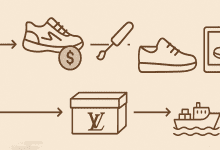





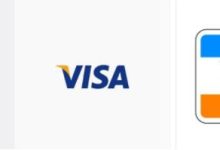




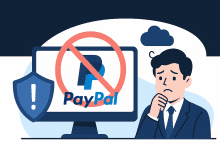







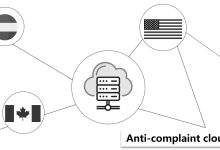




![5 Best WordPress Themes for Replica Product International Trade Websites [Recommended]-Custom E-commerce Solutions for High-Quality Designer-Inspired Fashion Replicas | Website Development, Dropshipping, Payment Integration for PayPal and Stripe, Ad Cloaking Services](https://replicasmaster.com/wp-content/uploads/2025/06/1-1-220x150.jpg)
